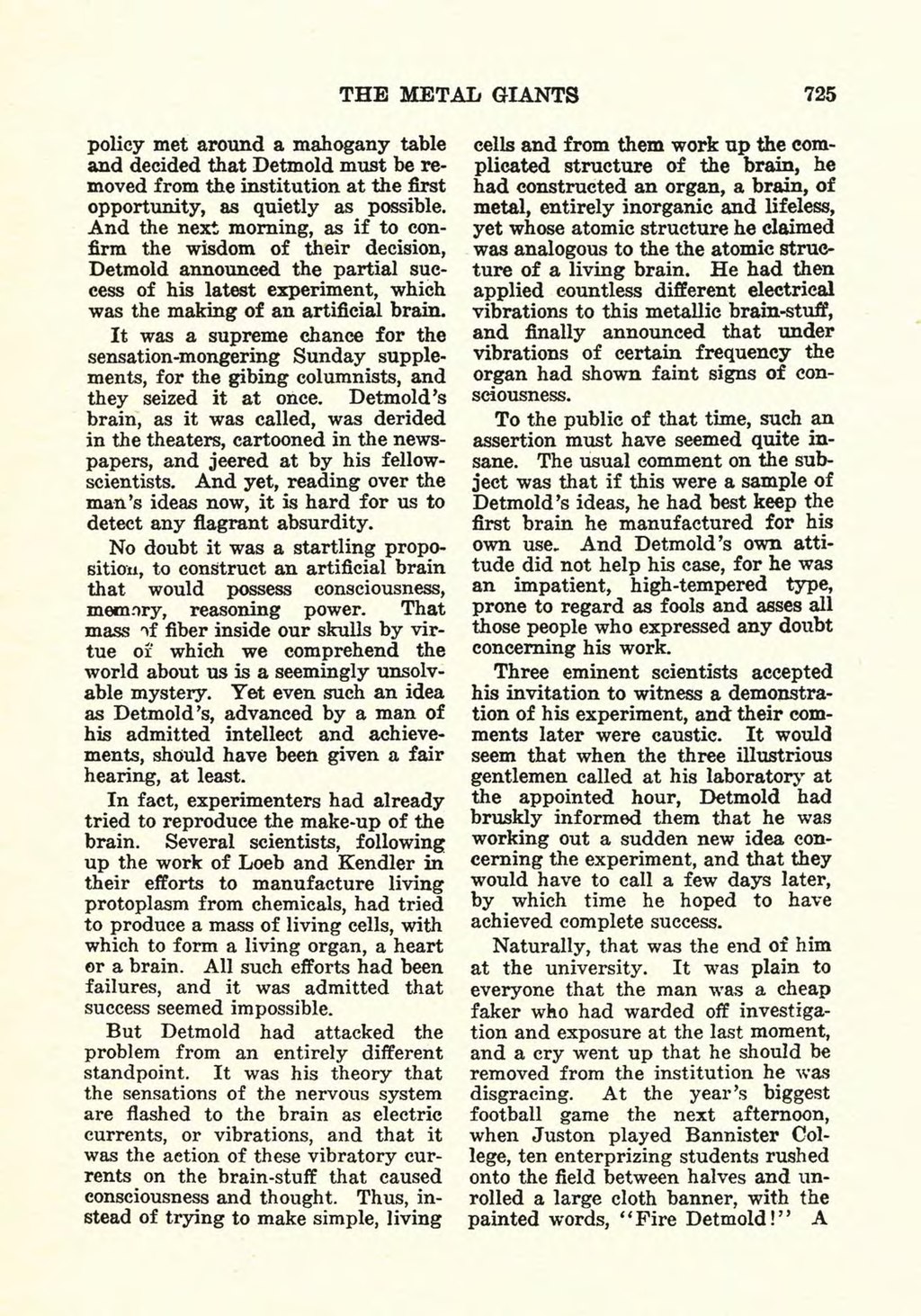policy met around a mahogany table and decided that Detmold must be removed from the institution at the first opportunity, as quietly as possible. And the next morning, as if to confirm the wisdom of their decision, Detmold announced the partial success of his latest experiment, which was the making of an artificial brain.
It was a supreme chance for the sensation-mongering Sunday supplements, for the gibing columnists, and they seized it at once. Detmold's brain, as it was called, was derided in the theaters, cartooned in the newspapers, and jeered at by his fellow-scientists. And yet, reading over the man's ideas now, it is hard for us to detect any flagrant absurdity.
No doubt it was a startling proposition, to construct an artificial brain that would possess consciousness, memory, reasoning power. That mass of fiber inside our skulls by virtue of which we comprehend the world about us is a seemingly unsolvable mystery. Yet even such an idea as Detmold's, advanced by a man of his admitted intellect and achievements, should have been given a fair hearing, at least.
In fact, experimenters had already tried to reproduce the make-up of the brain. Several scientists, following up the work of Loeb and Kendler in their efforts to manufacture living protoplasm from chemicals, had tried to produce a mass of living cells, with which to form a living organ, a heart or a brain. All such efforts had been failures, and it was admitted that success seemed impossible.
But Detmold had attacked the problem from an entirely different standpoint. It was his theory that the sensations of the nervous system are flashed to the brain as electric currents, or vibrations, and that it was the action of these vibratory currents on the brain-stuff that caused consciousness and thought. Thus, instead of trying to make simple, living cells and from them work up the complicated structure of the brain, he had constructed an organ, a brain, of metal, entirely inorganic and lifeless, yet whose atomic structure he claimed was analogous to the the atomic structure of a living brain. He had then applied countless different electrical vibrations to this metallic brain-stuff, and finally announced that under vibrations of certain frequency the organ had shown faint signs of consciousness.
To the public of that time, such an assertion must have seemed quite insane. The usual comment on the subject was that if this were a sample of Detmold's ideas, he had best keep the first brain he manufactured for his own use. And Detmold's own attitude did not help his case, for he was an impatient, high-tempered type, prone to regard as fools and asses all those people who expressed any doubt concerning his work.
Three eminent scientists accepted his invitation to witness a demonstration of his experiment, and their comments later were caustic. It would seem that when the three illustrious gentlemen called at his laboratory at the appointed hour, Detmold had bruskly informed them that he was working out a sudden new idea concerning the experiment, and that they would have to call a few days later, by which time he hoped to have achieved complete success.
Naturally, that was the end of him at the university. It was plain to everyone that the man was a cheap faker who had warded off investigation and exposure at the last moment, and a cry went up that he should be removed from the institution he was disgracing. At the year's biggest football game the next afternoon, when Juston played Bannister College, ten enterprizing students rushed onto the field between halves and unrolled a large cloth banner, with the painted words, "Fire Detmold!" A
